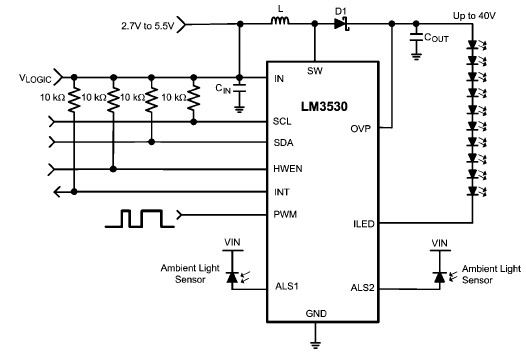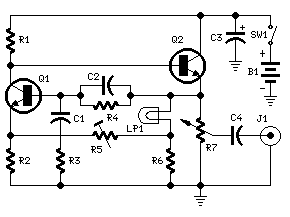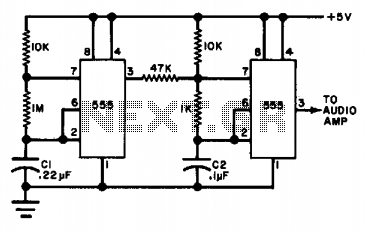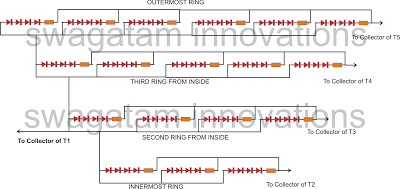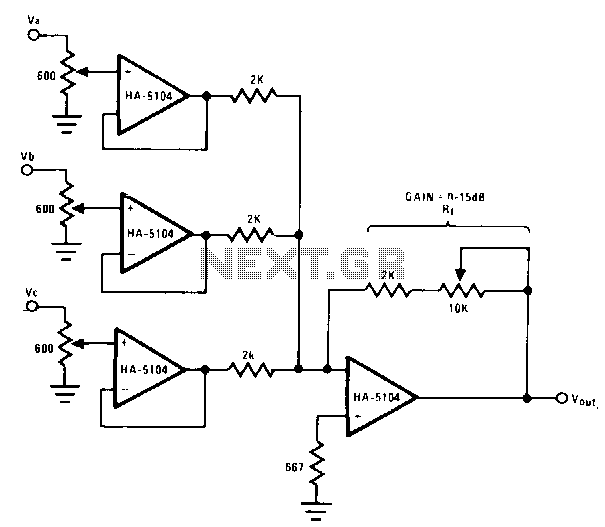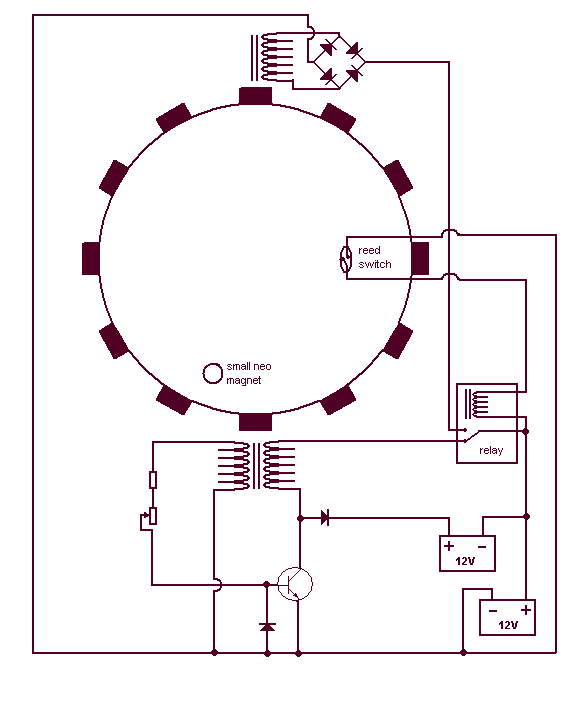
40KHZ LED TEST SIGNAL GENERATOR
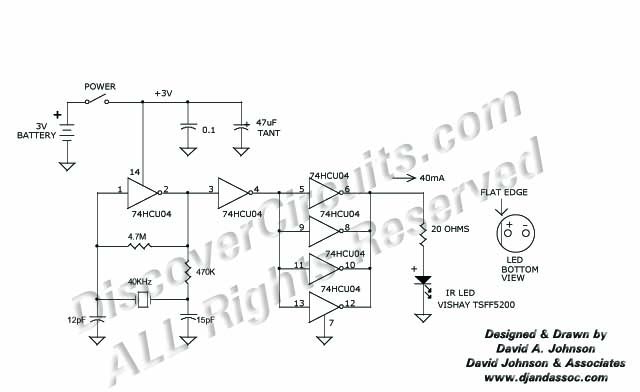
This 40 kHz crystal-controlled oscillator circuit drives an infrared LED with powerful 40 mA pulses.
The circuit operates at a frequency of 40 kHz, determined by the crystal oscillator, which provides stable frequency output essential for applications requiring precise timing. The oscillator generates square wave signals that are used to modulate the infrared LED. The LED is driven by pulses of 40 mA, ensuring sufficient intensity for effective infrared transmission.
The crystal oscillator typically consists of a quartz crystal, which is connected in a feedback loop with an amplifier to maintain oscillation. The output of the oscillator can be connected directly to the infrared LED, often through a transistor or a driver circuit to handle the higher current requirements. This configuration allows for efficient switching of the LED, producing strong infrared pulses suitable for remote control applications or optical communication.
To ensure optimal performance, appropriate resistors and capacitors are used to stabilize the oscillator circuit and filter any noise. Additionally, the design may incorporate protective diodes to prevent back EMF from affecting the oscillator during operation. The circuit can be powered using a suitable DC supply, ensuring that the voltage levels are compatible with the components used. Overall, this setup provides a reliable and effective means of generating infrared signals for various electronic applications.This 40KHz crystal controlled oscillator circuit drives an infrared LED with powerful 40ma pulses 🔗 External reference
The circuit operates at a frequency of 40 kHz, determined by the crystal oscillator, which provides stable frequency output essential for applications requiring precise timing. The oscillator generates square wave signals that are used to modulate the infrared LED. The LED is driven by pulses of 40 mA, ensuring sufficient intensity for effective infrared transmission.
The crystal oscillator typically consists of a quartz crystal, which is connected in a feedback loop with an amplifier to maintain oscillation. The output of the oscillator can be connected directly to the infrared LED, often through a transistor or a driver circuit to handle the higher current requirements. This configuration allows for efficient switching of the LED, producing strong infrared pulses suitable for remote control applications or optical communication.
To ensure optimal performance, appropriate resistors and capacitors are used to stabilize the oscillator circuit and filter any noise. Additionally, the design may incorporate protective diodes to prevent back EMF from affecting the oscillator during operation. The circuit can be powered using a suitable DC supply, ensuring that the voltage levels are compatible with the components used. Overall, this setup provides a reliable and effective means of generating infrared signals for various electronic applications.This 40KHz crystal controlled oscillator circuit drives an infrared LED with powerful 40ma pulses 🔗 External reference
